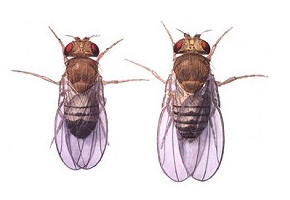

A multidisciplinary network that grew from a FAPESP Thematic Project has become a world leader in Drosophila cell culture techniques
A multidisciplinary network that grew from a FAPESP Thematic Project has become a world leader in Drosophila cell culture techniques. Their work was described in a recent article in Biotechnology Advances.
A multidisciplinary network that grew from a FAPESP Thematic Project has become a world leader in Drosophila cell culture techniques. Their work was described in a recent article in Biotechnology Advances.

A multidisciplinary network that grew from a FAPESP Thematic Project has become a world leader in Drosophila cell culture techniques
By Fábio de Castro
Agência FAPESP – Working for more than a decade to develop bioprocesses that involve Drosophila melanogaster cells, a multidisciplinary network of Brazilian scientists has become a global leader in the field.
Used in a broad array of genetic studies, the fruit fly Drosophila melanogaster is one of the most important biological model organisms. The protocols developed for studies in this organism – which have involved everything from cloning techniques to the development of bioprocesses for the production of viral proteins – could eventually be used in the production of vaccines.
A review that synthesizes some of the major results obtained through this collaboration was recently published in the journal Biotechnology Advances.
Involving five multidisciplinary laboratories, the Technologies with Animal Cells Network (TACnet) is coordinated by Augusto Perreira, the Director of the Viral Immunology Laboratory of the Butantan Institute and the first author of the article.
TACnet is comprised of a network of scientists from the Bioreactor and Colloid Engineering Laboratory at the Chemical Engineering School of Universidade Estadual de Campinas (Unicamp), the Cell Culture Technology Laboratory at the Universidade Federal de São Carlos (UFSCar) Department of Chemical Engineering, the Industrial Biotechnology Laboratory at the Institute of Technological Research (IPT) and the Animal Cell Laboratory at the Department of Chemical Engineering within the Universidade de São Paulo (USP) Polytechnic School.
According to Pereira, TACnet was formed in 2002, when scientists from five laboratories came together to participate in the “Heterologous Gene Expression in Dipterous Cells: molecular biology and bioprocess engineering” Thematic Project, which was coordinated by his laboratory and funded by FAPESP.
“The project’s objective was to develop bioprocesses involving Drosophila cells. Given the essentially multidisciplinary characteristics of the project, we had to involve quality groups from various institutions, including biologists, biochemists, veterinarians and biochemical engineers,” Pereira told Agência FAPESP.
Although the Thematic Project ended in 2010, the network remained active. “Animal cell technology has innumerous applications, and its use will only increase. In this area, we work with technologies like cloning and gene expression, formulation of culture media, the identification of cellular growth factors, increasing the scale of bioreactor cultures, the definition, modulation and control of cellular metabolism, the transfer and control of oxygen metabolism and mathematical modeling,” he explained.
In the review article, the researchers described the strategies used for heterologous gene expression – that is, expressing genes originating from other organisms – in Drosophila cells utilizing plasmid vectors. The scientists had some success in the expression of biologically functional rabies virus proteins in recombinant fly cells.
“The article describes strategies from gene cloning to bioprocesses, gathering the experience acquired by the group in the Thematic Project. Recombinant proteins currently play a central role in vaccine production. We sought to develop technologies for this type of production using Drosophila cells,” he explained.
The objective, according to Pereira, was to establish knowledge and conditions favorable to the development of new protocols and parameters that will enable the production of vaccines in the future.
“Few organisms are as well-known as Drosophila. We want to take advantage of the existing knowledge in traditional biology and apply it in immunobiological production technologies. Our group probably has the most experience in this area worldwide,” Perreira said.
In addition to the scientific knowledge produced, the Thematic Project has had a major impact on training personnel. In total, it generated 23 master’s dissertations and 10 doctoral theses.
“The project had the merit of training several individuals and different groups in technologies that didn’t exist before. In addition, there were a large number of cooperative efforts involving researchers from different disciplines, favoring discussion of questions on the frontiers of knowledge. The multidisciplinary cooperation was always a bottleneck, but we managed to overcome it,” he explained.
All of the subgroups involved were actively engaged in the project, according to Pereira, and published more than 30 articles in indexed periodicals, in addition to books and book chapters.
“We also had a large number of presentations at national and international events. A total of 55 people were actively involved in the development of the project,” he said.
The article Drosophila melanogaster S2 cells for expression of heterologous genes: From gene cloning to bioprocess development, by Carlos Pereira and colleagues, can be read by subscribers of Biotechnology Advances at www.ncbi.nlm.nih.gov/pubmed/22079894.
Republish
The Agency FAPESP licenses news via Creative Commons (CC-BY-NC-ND) so that they can be republished free of charge and in a simple way by other digital or printed vehicles. Agência FAPESP must be credited as the source of the content being republished and the name of the reporter (if any) must be attributed. Using the HMTL button below allows compliance with these rules, detailed in Digital Republishing Policy FAPESP.





